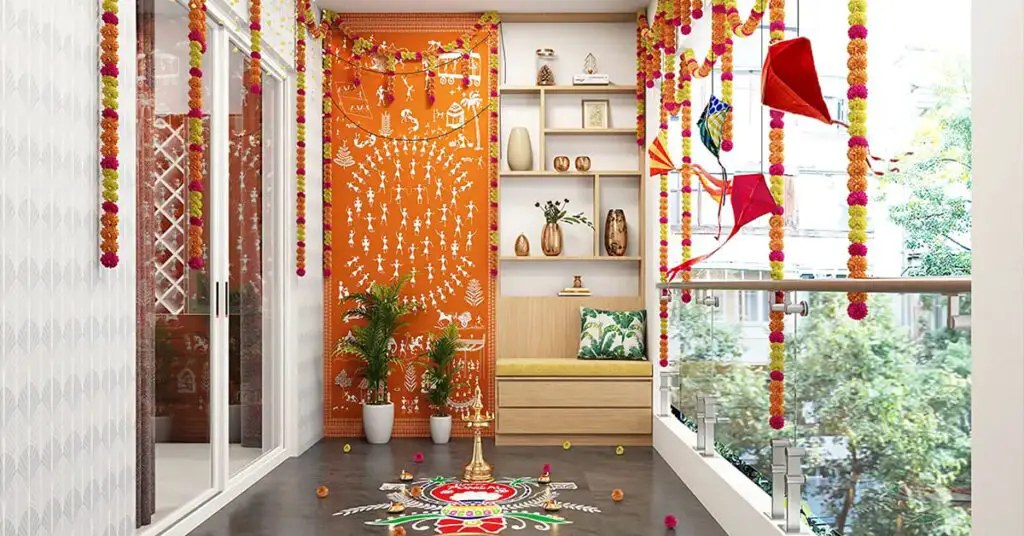Introduction to Rangoli and Its Significance in Home Decor
Rangoli, an ancient and vibrant art form, has been a staple in Indian culture, symbolizing prosperity, happiness, and a warm welcome to guests. Predominantly used during festivals like Diwali, Pongal, and Onam, rangoli designs have evolved from traditional motifs to more modern and simple patterns that fit perfectly into daily home decor. In this article, we explore a variety of simple rangoli designs that are not only easy to create but also add a touch of cultural charm to your living space.
Essentials for Creating Simple Rangoli Designs
Before diving into the intricate world of rangoli, it’s crucial to gather the right materials. Traditionally, the primary material used is colored rice flour, though other accessible items like chalk, sand, and flower petals are also popular. For beginners, it’s advisable to start with simple tools such as:
- A chalk for outlining designs.
- Colored powders or commercial rangoli powders.
- Flower petals for a natural touch.
- A few small bowls to mix colors and hold materials.
- A sieve to help spread powders smoothly and evenly.
Step-by-Step Guide to Simple Rangoli Designs
1. The Basic Floral Pattern A basic floral rangoli design is ideal for beginners. Start with a simple circle and use your chalk to sketch out petals around the perimeter. Fill in each section with vibrant colors such as red, yellow, and green. Enhance the design by placing a diya (an Indian clay lamp) in the center to elevate its festive look.
2. Geometric Simplicity Geometric patterns, with their clean lines and symmetrical shapes, are both modern and easier to craft. Utilize a ruler or a straight edge to outline your design directly on the floor. Fill in the shapes with bold colors to create a striking contrast. This type of design is particularly appealing in minimalist home settings.
3. Abstract Peacock Design The peacock is a majestic symbol often depicted in traditional Indian art. For a simple version, sketch the outline of a peacock feather or the bird’s profile filled with abstract shapes. Use shades of blue and green for authenticity, and add gold or glitter for a festive touch.
4. Floating Flower Rangoli For those who prefer not to use powders, floating flower rangolis are a beautiful and ephemeral alternative. Fill a wide, shallow bowl with water and gently place layers of petals to form designs. This type of rangoli is exceptionally captivating and can double as a centerpiece for tables.
Incorporating Rangoli into Home Decor
Beyond festivals, rangoli can be incorporated into home decor in various creative ways. Here are a few ideas:
- Doorway Designs: Welcome guests with a small, simple rangoli design at your entrance. Opt for materials that can withstand foot traffic and weather conditions.
- Wall Art: Transform a rangoli design into a permanent art piece by creating it on a large canvas. Hang it as a focal point in a living room or hallway.
- Decorative Accents: Use small rangoli patterns as decorative accents around the home. They can be drawn around planters, on the doorstep, or even on tabletops.
Cultural Relevance and Modern Adaptations
While rangoli is deeply rooted in tradition, its adaptation in contemporary home decor speaks volumes about its versatility and cultural significance. It notifies a blend of heritage and modernity, making it appealing not only to those who are culturally connected to its origins but also to individuals looking for a unique way to enhance their home environment.
Conclusion
Simple rangoli designs offer an exquisite blend of tradition, art, and simplicity, making them perfect for modern homes. Whether you choose a basic geometric pattern or a more elaborate floral motif, incorporating rangoli into your home decor can transform your space, making it vibrant, inviting, and culturally rich.


